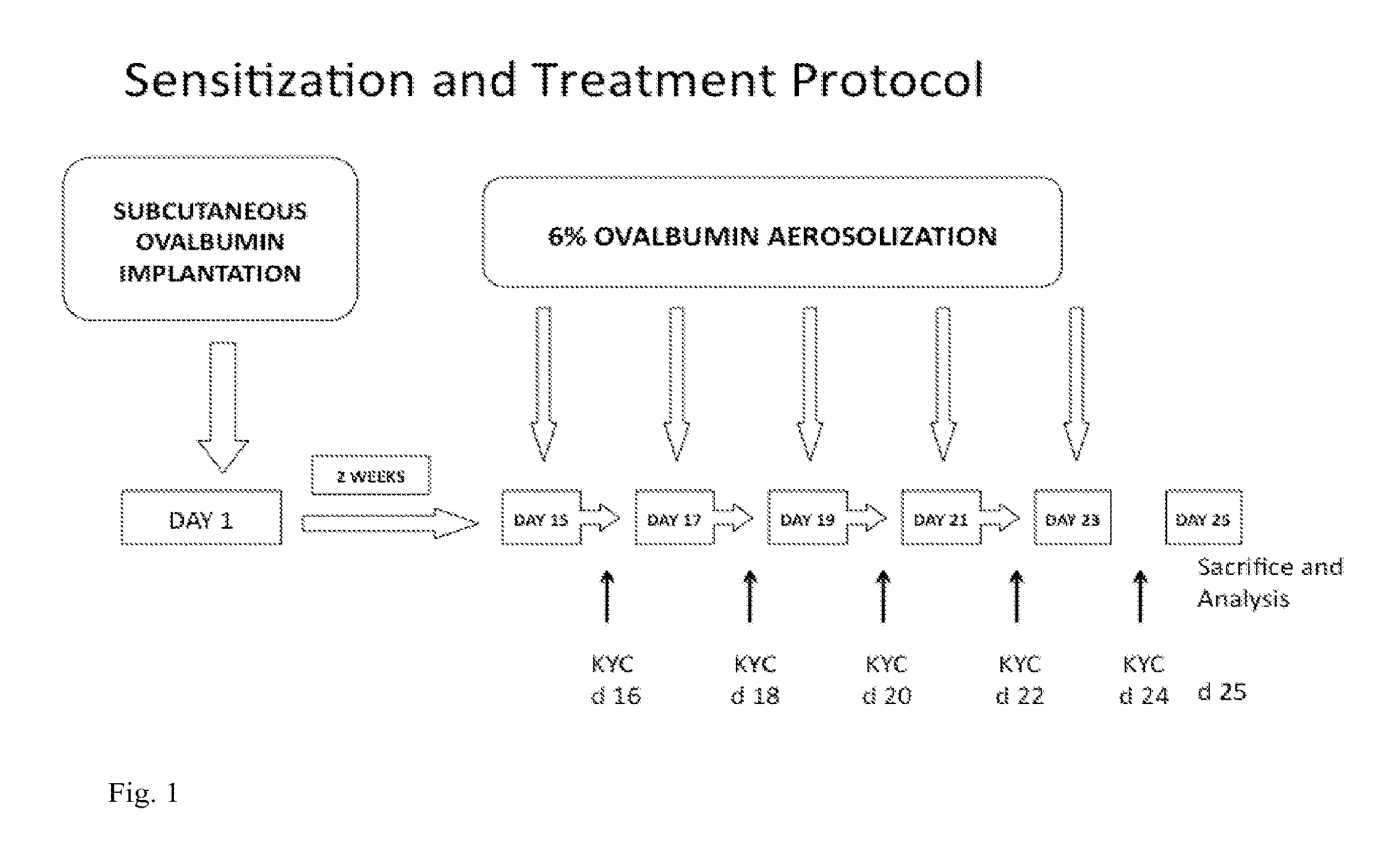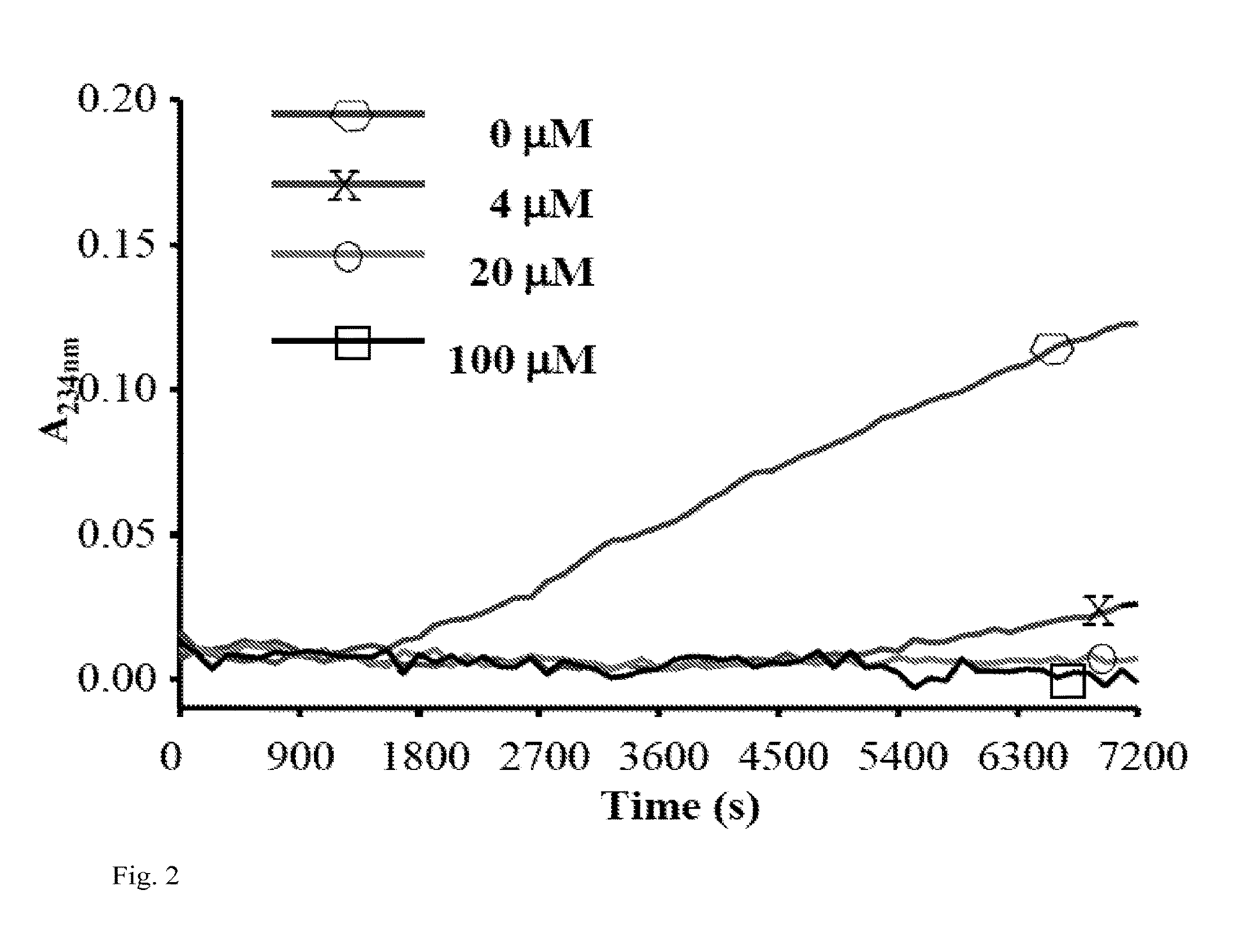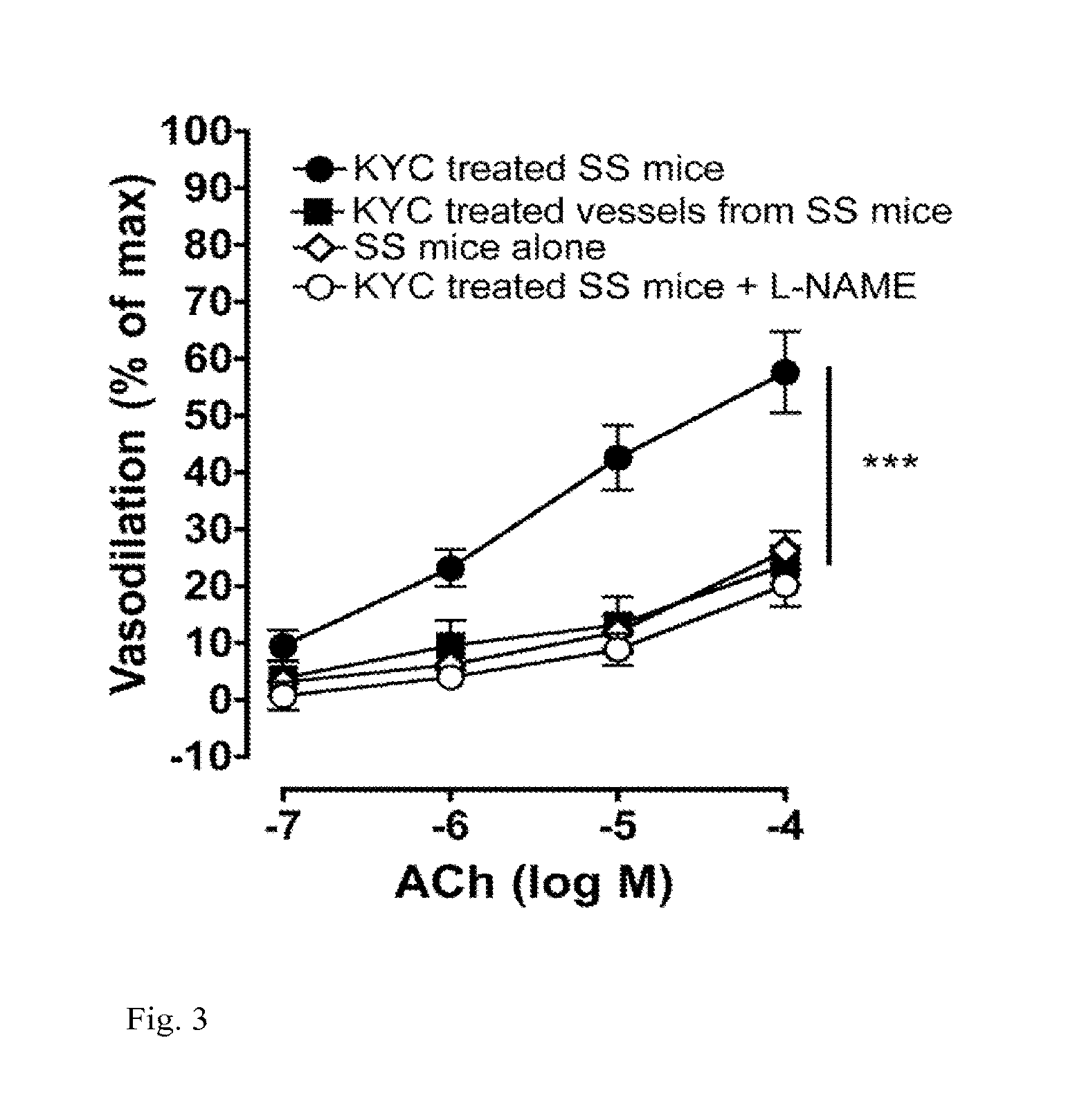Peptide-Based Peroxidase Inhibitors and Methods of Using Same
a technology of heme peroxidase and inhibitors, which is applied in the direction of peptide/protein ingredients, peptide sources, metabolic disorders, etc., can solve the problems of ineffective therapies targeting aberrant heme peroxidase activity, severe respiratory damage in asthma, and cell injury and death, so as to reduce pulmonary inflammation, potent inhibitors of peroxidase activity, and improve vascular function
- Summary
- Abstract
- Description
- Claims
- Application Information
AI Technical Summary
Benefits of technology
Problems solved by technology
Method used
Image
Examples
examples
[0113]The following examples are provided as further non-limiting illustrations of particular embodiments of the invention.
[0114]Peptide Synthesis. Tripeptides (Ac-KYC-amide [KYC] and Ac-KWC-amide[KWC]) were synthesized using Fmoc (N-(9-fluorenyl)methoxycarbonyl) chemistry by the Protein, Nucleic Acid Core Laboratory of the Medical College of Wisconsin and purified by a preparative HPLC. The purity and authenticity of both peptides were assured by a single peak from an RP-HPLC analysis and correct mass determined by a matrix-assisted laser desorption ionization time-of-flight mass spectrometry.
[0115]Tyrosine (Y), an aromatic amino acid, is rapidly oxidized by MPO to generate toxic tyrosyl radicals (Y.). In developing KYC, we reasoned that if this MPO substrate were going to be used to inhibit MPO then the Y. radicals that would be generated would have to be scavenged before they had a chance to oxidize other cellular targets. One of the ways to scavenge free radicals is by intramole...
example 2
Inhibition of Myeloperoxidase Activity by N-acetyl Lysyltyrosylcysteine Amide
[0160]Myeloperoxidase (MPO) is a heme peroxidase released from activated neutrophils, macrophages and monocytes that plays important roles in host defense. Ferric MPO reacts with hydrogen peroxide (H2O2) to form compound I, an oxy-ferryl-cation radical (P.Fe4+═O) intermediate. This intermediate can oxidize a wide variety of substrates to generate an equally wide variety of toxic oxidants and free radicals to kill invading bacteria and viruses. Compound I oxidizes (pseudo)halides (such as chloride (Cl−), bromide (Br−) and thiocynate (SCN−)) via direct, two-electron reduction (halogenations cycle) to form corresponding (pseudo)hypohalous acids (such as HOCl, hypobromous acid (HOBr) and hypothiocynate (HOSCN)). MPO also oxidizes organic substrates such as Tyr and Trp to form tyrosyl (Tyr.) and tryptophanyl (Trp.) radicals, respectively as well as a wide variety of ionic species (nitrite (NO2−), ascorbate and u...
PUM
 Login to View More
Login to View More Abstract
Description
Claims
Application Information
 Login to View More
Login to View More - R&D
- Intellectual Property
- Life Sciences
- Materials
- Tech Scout
- Unparalleled Data Quality
- Higher Quality Content
- 60% Fewer Hallucinations
Browse by: Latest US Patents, China's latest patents, Technical Efficacy Thesaurus, Application Domain, Technology Topic, Popular Technical Reports.
© 2025 PatSnap. All rights reserved.Legal|Privacy policy|Modern Slavery Act Transparency Statement|Sitemap|About US| Contact US: help@patsnap.com



